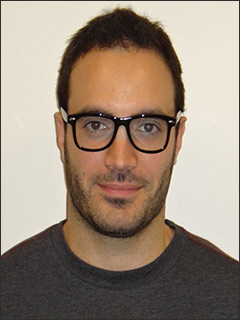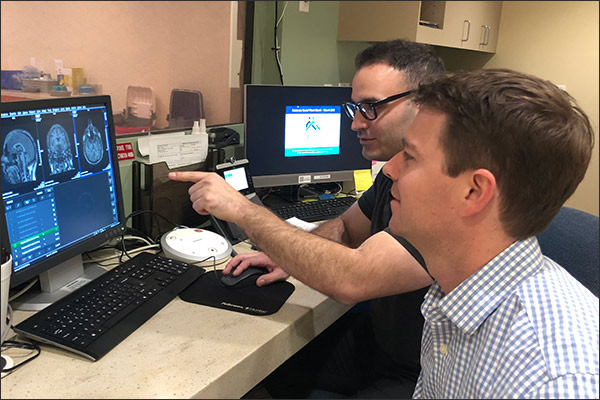2015 New Investigators Research Grant, 2016 Research Travel Grant
A Circuitous Path to the Future
 Jonathan Venezia is currently a research scientist at the VA Loma Linda Healthcare System and a research assistant professor at Loma Linda University in the Department of Otolaryngology. But the path to that successful present career was a bit, let’s say, indirect.
Jonathan Venezia is currently a research scientist at the VA Loma Linda Healthcare System and a research assistant professor at Loma Linda University in the Department of Otolaryngology. But the path to that successful present career was a bit, let’s say, indirect.
Venezia actually started out in political science and economics, as an intern in a lobbying firm. It didn’t take him long to decide that that calling was not for him. Next, he took a leave from school for a year and started his own business running a small fitness studio. Not his passion either for the long term, he realized. Then he returned to school to finish his BA degree in psychology where he became interested in neuroscience and where his future finally began to clarify itself. Next step was his decision to pursue a PhD with Greg Hickok, professor of Cognitive Science at the University of California Irvine, who was doing what Venezia recognized as very exciting work in the neurobiology of language. Venezia applied, was accepted, and finished his PhD in 2014.
In 2015, now a postdoctoral fellow at UC Irvine, Venezia was awarded an ASHFoundation New Investigators Research Grant for work in the development of a perceptual technique called auditory bubbles. "The procedure is based on a visual technique to determine the most salient features in a visual pattern," he explains. "I adapted the technique for the auditory/perceptual domain. It can be used to identify what acoustic features support speech intelligibility or vocal emotion perception and other perceptual constructs."
 Venezia employed the technique to study speech perception in adults with and without sensorineural hearing loss. By using auditory bubbles to generate "perceptual maps" of the acoustic features relied upon by different listeners to understand speech, he showed that listeners with hearing loss have a diminished ability to encode a particular subset of acoustic features that ordinarily would transmit a great deal of meaningful information. "There is potential for using this technique for clinical purposes in the future," Venezia says, "especially for hearing aid fitting or in the design of new signal processing algorithms."
Venezia employed the technique to study speech perception in adults with and without sensorineural hearing loss. By using auditory bubbles to generate "perceptual maps" of the acoustic features relied upon by different listeners to understand speech, he showed that listeners with hearing loss have a diminished ability to encode a particular subset of acoustic features that ordinarily would transmit a great deal of meaningful information. "There is potential for using this technique for clinical purposes in the future," Venezia says, "especially for hearing aid fitting or in the design of new signal processing algorithms."
Using the data from the ASHFoundation grant, in 2017 Venezia applied for and received a five-year VA Career Development Award to fund his salary and several research studies investigating the auditory processing deficits experienced by military veterans who had been exposed to a high-density blast (explosion). Many of these veterans, often relatively young, return from service with normal peripheral hearing and no obvious signs of neural degeneration, yet they report auditory deficits resembling those that commonly arise during early aging.
"The primary goal of the project is to look at the interactive effects of aging and blast exposure on hearing and auditory processing," Venezia says. "My plan is to further develop the bubbles procedure that was funded by the ASHFoundation so it can be combined with functional imaging to probe the auditory-cortical mechanisms involved in blast injury."
It was, in fact, that initial funding from the ASHFoundation that put Venezia on the path to develop his independent research career. "Up to that point," he explains, "I had not applied for any formal funding, so it was my first opportunity to have my research evaluated by other scientists and to think about exactly where I wanted to go with it, and then to synthesize my ideas into a meaningful proposal. It was a great way to increase my confidence so I could apply for additional funding. The ASHFoundation really has been a launching pad for my career. Without its help, I wouldn’t be where I am today."
View More Recipient Spotlights